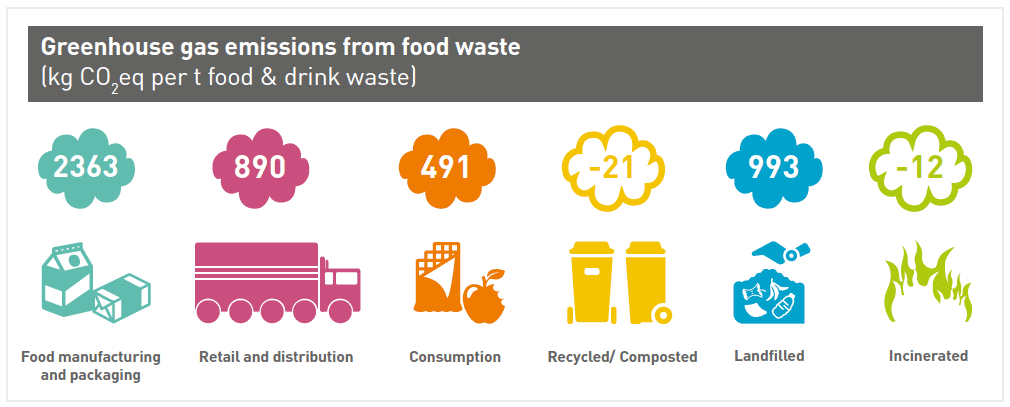Food waste reduction: action plan
Sets out how Scotland can work to deliver it's commitment to reduce food waste by 33% by 2025.
Why do we need a food waste action plan?
Planning for Success: Scotland's Food Waste Action Plan
To achieve an ambitious objective like the 2025 food waste reduction target, we need long-term planning and equally ambitious policy efforts. The Scottish Government recognised this in its Climate Change Plan: The Third Report on Proposals and Policies 2018-2032, where it announced that it would develop a National Food Waste Action Plan to reach its 33% target.
What is food waste?
Scotland has adopted the definition of food and drink waste developed by FUSIONS, a European collaboration funded by the EU Framework Programme 7: "Food waste is any food, and inedible parts of food, removed from the food supply chain to be recovered or disposed (including composted, crops ploughed in/not harvested, anaerobic digestion, bio-energy production, co-generation, incineration, disposal to sewer, landfill or discarded to sea)". It is likely that this definition will underpin further EU guidance and that Scotland will continue to align with this.
The impact of landfill food waste
Household food waste alone accounts for 2,240,000 tonnes CO2eq, this represents 2.9% of Scotland's carbon footprint.
Food waste sent to landfill is particularly problematic as it releases methane, a greenhouse gas many times more potent than carbon dioxide. In 2016, 1.15 million tonnes of biodegradable waste (food waste and other organic waste such as garden waste) was sent to landfill in Scotland. This represented a 43% reduction over 10 years (CCC, 2018) but is still a challenging volume that must be reduced.
In January 2021, Scotland will ban the landfilling of biodegradable municipal waste. This Plan will help implement the ban by reducing the food waste in municipal waste. It will, therefore, support the continued reduction in emissions and Scotland's climate targets.
Figure 1: Greenhouse gas emissions from food waste (Zero Waste Scotland, 2016)

A circular economy approach to food waste
Our main aim is to prevent food waste. However, some waste is unavoidable or inedible and we treat this as a resource with value that can be used within a circular economy; supporting Scotland's (Making Things Last) strategy.
- Scotland's vibrant food and drink sector produces significant quantities of waste and by-products. Using biorefining technology could turn waste into valuable new forms. (The Biorefinery Roadmap for Scotland and IBiolC resource mapping tool).
- There is also potential for waste as an interim source of fuel as Scotland moves towards 100% renewable energy generation.
- Food waste can be used in more sustainable agricultural practices: as compost, for soil improvement; and to reduce reliance on fossil fuel-based fertilisers.
Valuing our food
Scotland has a vibrant and unique food and drink industry and our food is a strong part of our identity. By valuing our locally-sourced food more, and wasting less, we can boost the Scottish food and drink sector, improve our food security, and support national health and wellbeing. This aligns with Scottish Government policies such as A Healthier Future and Good Food Nation, and to the Scotland Food & Drink Partnership's Ambition 2030.
When we are detached from our food's source, from the people who produce it and its place in the environment, we are less likely to value our food and may be more likely to waste it. Scottish householders waste more than £1 billion worth of food each year.
Zero Waste Scotland has supported the Scottish Government in developing this Plan and its measures to significantly reduce food waste across all major sectors by 2025.
Scottish householders waste more than £1 billion of food each year
Zero Waste Scotland held workshops with stakeholders from all sectors to build an initial list of interventions. These suggested Measures were analysed and used to build a shortlist which was then assessed according to its applicability in the Scottish context, its coherence and its practicality.
Each Measure will be implemented through a series of actions and activities. Some of these have already been initiated while others will be introduced in the period up to 2025. The Plan also brings together Scottish Government commitments made in other relevant strategies and reports.
Contact
Email: anne.dagg@gov.scot
There is a problem
Thanks for your feedback